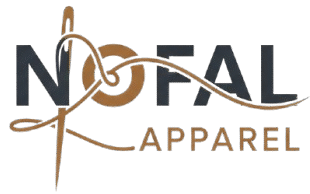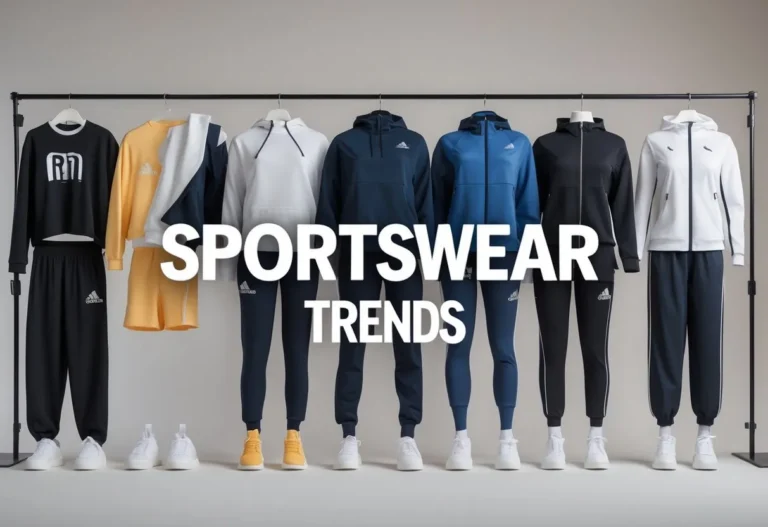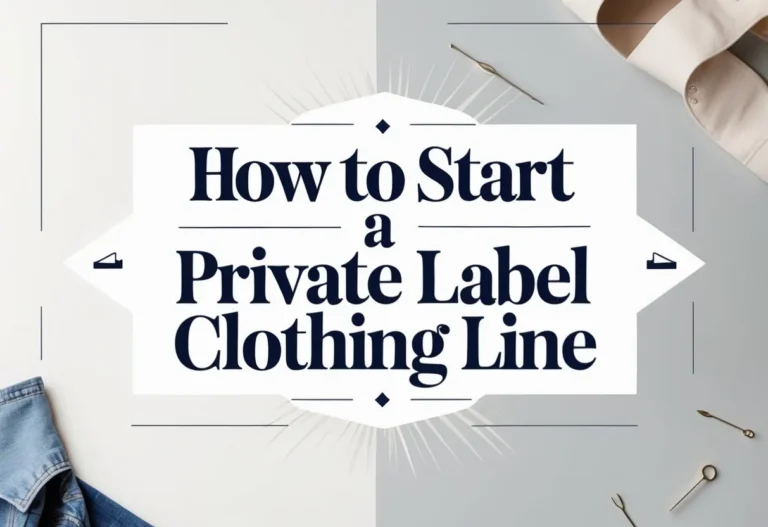The cost of manufacturing clothing varies widely depending on several key factors, including materials, labor, design complexity, and order size. For basic garments made in small batches, production typically costs between $8 and $30 per piece, but this can increase with higher quality fabrics, special trims, or more detailed workmanship. Understanding these elements helps brands set realistic prices and control expenses.
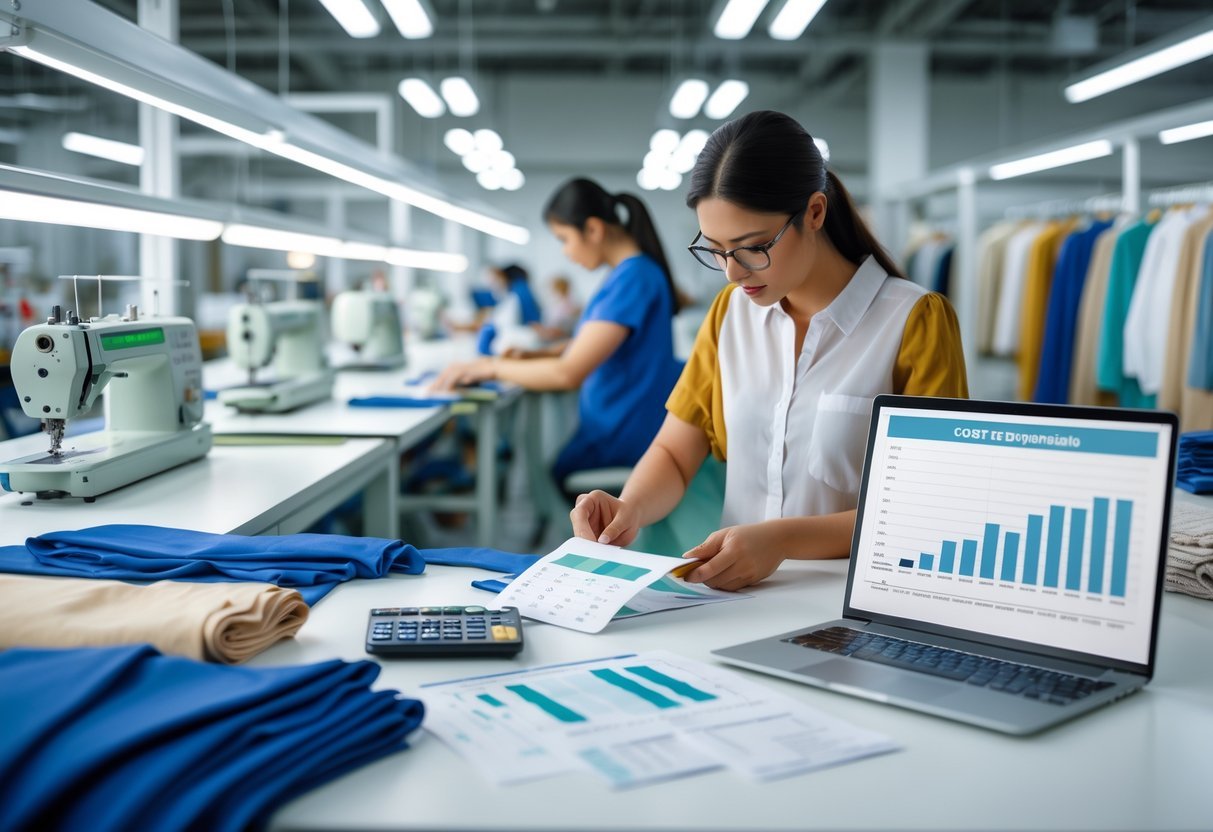
Costs go beyond just sewing the garment; they also include sampling, packaging, shipping, and any customizations like printing or embroidery. Each stage adds to the total cost, and locations of production can influence labor and shipping expenses significantly. Brands aiming for affordable yet quality manufacturing must balance these factors carefully.
Knowing how manufacturers calculate quotes and manage budgets allows businesses to plan better and avoid unexpected costs. Starting with simple designs and gradually scaling can help reduce expenses and improve profitability over time.
Key Takeways
- Manufacturing costs depend on materials, labor, and order size.
- Additional expenses include sampling, packaging, and shipping.
- Clear budgeting and planning help manage costs and profits.
What Determines The Cost Of Manufacturing Clothing?

The cost to manufacture clothing depends on several key factors, each affecting the final price in different ways. These include the choice of materials, how much labor is needed, the complexity of the design, and the size of the order. Understanding these factors helps businesses plan their budgets carefully and manage expenses efficiently.
Material Selection and Fabric Types
Material costs make up a large portion of clothing manufacturing expenses. Fabrics such as cotton and polyester are generally cheaper, with cotton around $8 per kilogram, while luxury materials like silk or wool can cost much more—up to $123 per kilogram for wool.
The choice of fabric affects both cost and quality. Thicker, more durable fabrics often use more expensive raw materials and may require additional treatments. Accessories like buttons, zippers, and labels also add to material costs.
Using lower-cost fabrics reduces expenses but may affect the clothing line’s quality. This balance is essential, especially for brands aiming at specific market segments.
Labor Costs and Workforce Considerations
Labor costs vary based on location, skill level, and employment type. Hiring full-time employees may cost between $2,500 and $5,500 a month per worker, depending on their role.
Part-time workers typically earn between $10 and $20 per hour, while outsourcing tasks can range from $30 to $150 hourly. These costs include cutting, sewing, finishing, and quality checks.
Efficient workforce management helps control costs without sacrificing quality. For startup clothing lines, balancing in-house labor and outsourcing is key to staying within budget.
Design Complexity and Customization
More complex clothing designs increase production costs. Features such as intricate stitching, multiple fabric types, or custom prints require more time and skilled labor.
Custom elements like embroidery or special finishes raise the price further. Simple designs with fewer details usually cost less and can be produced faster.
Brands offering highly customized apparel should expect higher manufacturing costs. These costs reflect the extra effort and materials needed to meet specific design demands.
Order Quantity and Economies of Scale
Order quantity greatly affects manufacturing costs. Larger orders typically benefit from economies of scale, lowering the cost per unit.
Small orders often have higher costs because setup fees and labor are spread over fewer items. For example, producing 1,000 t-shirts costs less per piece than producing 100.
Clothing manufacturers usually offer discounts for bulk orders. Brands should consider placing larger orders to reduce overall expenses and improve profitability.
Key Elements Of Clothing Manufacturing Expenses
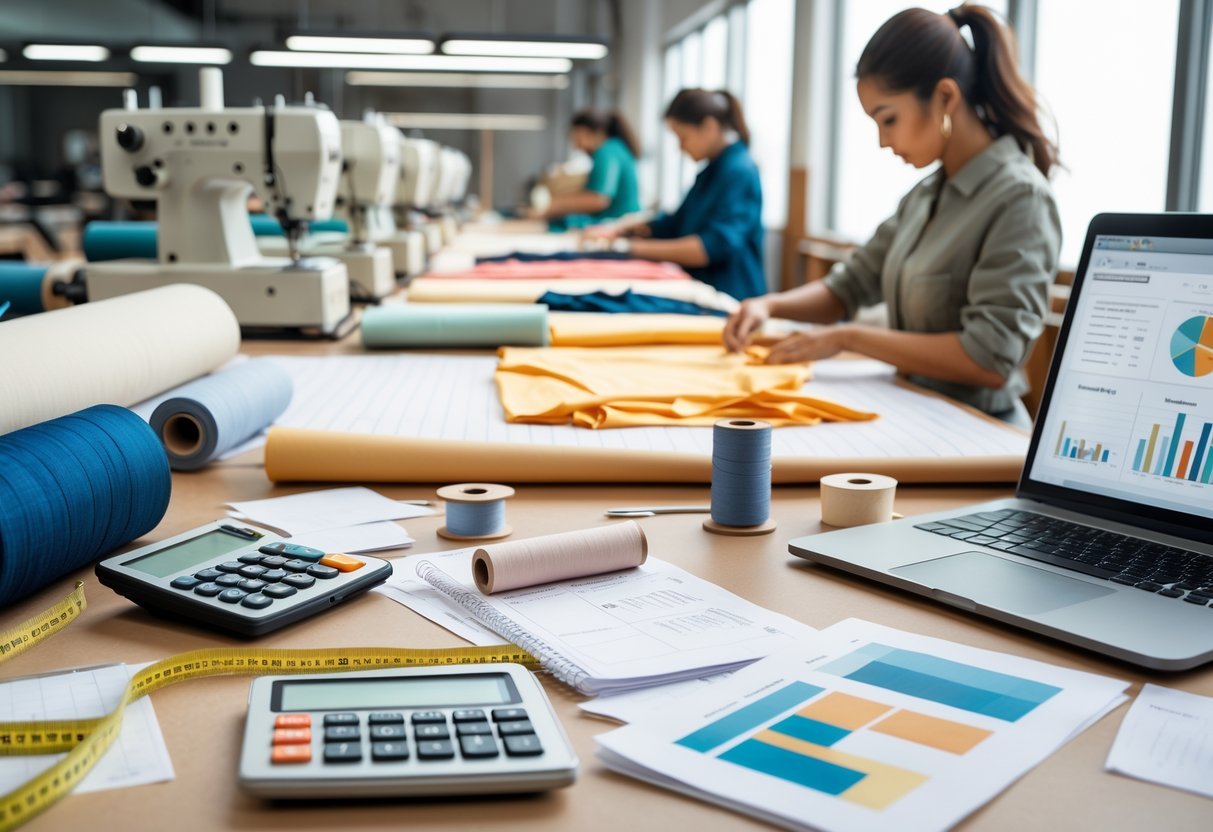
Clothing manufacturing expenses are driven by several crucial parts of the production process. These include the materials used, the physical steps to make garments, and ensuring the final products meet quality standards. Each area impacts the overall costs differently.
Raw Materials: Cotton, Wool, Silk, Polyester, and Alternatives
Raw materials form the largest portion of clothing manufacturing costs. Cotton is widely used, including organic cotton, which can be pricier due to eco-friendly farming methods. Wool costs more than cotton because of its sourcing and processing requirements. Silk is the most expensive natural fabric, valued for its texture and sheen.
Polyester is a cheaper synthetic option, often blended with natural fibers to reduce production costs. The choice between these materials affects price heavily. Fabric quality, availability, and sustainability certifications also influence cost. Producers often seek alternatives to balance price and quality, aiming to reduce raw material spending without losing fabric durability or appeal.
Cutting, Stitching, and Assembly
The next major expense is labor and machinery for cutting, stitching, and assembling garments. Cutting fabric accurately minimizes waste and is often done with automated machines that cost between $2,000 to $12,000. Skilled labor is essential to stitch pieces together properly, with costs varying by region and worker experience.
Stitching and assembly include paying hourly wages or employing full-time workers. Production efficiency depends on worker skill and equipment quality. These steps require both time and precision to keep costs down while maintaining garment integrity. Outsourcing parts of assembly can reduce expenses but may affect quality control.
Quality Control and Assurance
Quality control is a significant and sometimes underestimated cost in clothing manufacturing. It covers inspecting materials and finished products to catch defects early. This process can consume 15% to 40% of total expenses due to costs related to testing, rework, and waste reduction.
Producers invest in quality assurance to prevent returns and maintain brand reputation. Advanced technology and experienced inspectors contribute to lowering quality-related losses. Although quality control adds to costs, it ensures finished clothing meets customer expectations, reducing costly errors later in the supply chain.
Factory Overhead and Indirect Costs

Factory overhead includes many expenses that are necessary but not directly tied to making each garment. These costs are mostly fixed and impact the overall cost of production. Efficient management of indirect costs helps clothing manufacturers control their pricing and profitability.
Machinery, Equipment, and Facility Overhead
Machinery and equipment represent a significant part of factory overhead. This includes sewing machines, cutting tools, finishing machines, and computers used in production.
Costs vary widely:
- Sewing machines can cost between $19,000 and $40,000
- Cutting machines range from $2,000 to $12,000
- Finishing machines may cost as much as $7,000 to $50,000
Facility overhead includes rent or depreciation of the building where manufacturing happens. Utilities like water, electricity, and gas used in the factory also fall in this category. These fixed costs are necessary to keep production running regardless of output levels.
Energy Usage and Maintenance for Cost Of Manufacturing Clothing
Energy costs include power needed to run machines, lighting, heating, and cooling. These are major ongoing expenses. Electricity and fuel often make up a substantial fraction of a factory’s indirect costs.
Routine maintenance is essential to avoid machine breakdowns that could halt production. This includes servicing equipment and repairing any wear and tear promptly. Maintenance costs extend to the factory building and its supporting systems.
Failing to manage energy use or maintenance can lead to higher overhead and production delays, increasing overall manufacturing costs.
Staffing and Administrative Expenses
Indirect labor costs include wages for supervisors, quality control staff, and administrative employees. These workers do not make garments directly but support the production process.
Factory overhead also covers salaries for office staff, human resources, and management. These roles help run the business smoothly but add to fixed expenses.
Other related costs include payroll taxes, benefits, and sometimes training. Proper allocation of these expenses is essential to accurately price garments and keep the business profitable.
Packaging, Logistics, and Delivery Costs
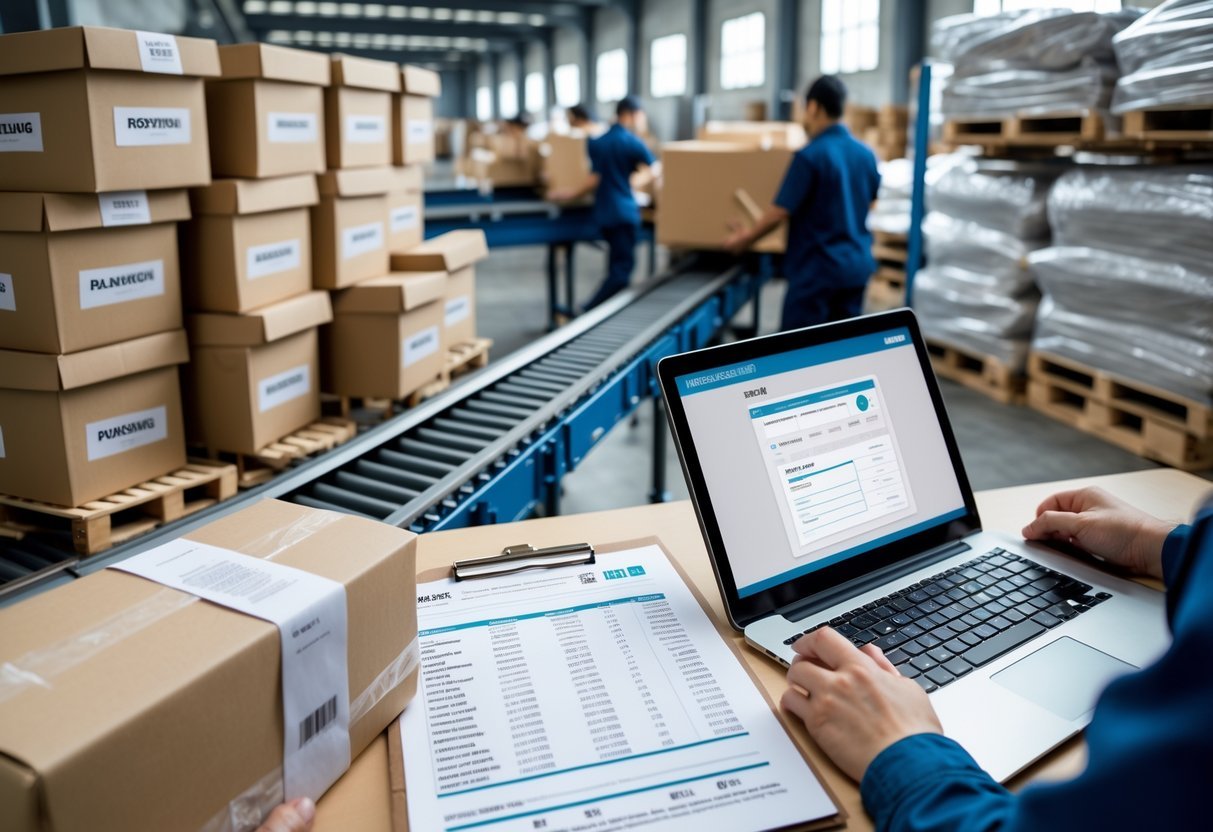
Packaging and delivery add important expenses to clothing manufacturing. These costs include materials used to protect the product and create brand identity, as well as the cost of moving goods from factory to customer. Proper planning helps control expenses and ensures timely shipment.
Packaging Materials and Branding for Cost Of Manufacturing Clothing
Packaging materials like polybags, boxes, and tissue paper protect garments during transport. Basic packaging reduces costs, but custom packaging with printed logos, hangtags, or labels enhances brand value.
Labels and tags not only provide product information but also contribute to the overall look. Adding woven or printed labels, size tags, and care instructions can increase packaging costs but improve customer experience.
Packaging costs typically range from $0.50 to $2.00 per piece, depending on material quality and customization level. Bulk orders lower this cost. Clear communication about packaging needs helps avoid surprises in quotes.
Shipping, Logistics, and Customs Duties
Shipping costs vary by distance, method, and destination. Air freight is faster but can cost $1.50 to $5.00 per garment, while sea freight is cheaper but slower. Choosing the right method depends on budget and timeline.
Logistics also includes warehousing, handling, and local transportation fees. These costs vary based on the location and size of shipments.
Customs duties and taxes affect international shipments. They depend on product type, value, and country-specific trade rules. These fees must be factored in early to prevent unexpected charges at delivery.
Cost Analysis, Budgeting, and Profitability

Careful evaluation of all expenses involved in producing clothing helps manufacturers set accurate prices and control their budgets. Managing manufacturing costs, understanding profit margins, and identifying cost-saving measures are key to maintaining a viable business.
Cost Sheets and Garment Costing Methods
Clothing manufacturers use cost sheets to outline every expense related to producing a garment. This includes material costs, such as fabric and trims, labor costs like wages for cutting and sewing, and overhead expenses such as rent and utilities.
Garment costing methods focus on calculating the cost of goods per unit. They take all these factors and add shipping and handling fees. This detailed approach gives a clear picture of the total cost needed to manufacture each item.
Accurate cost sheets help manufacturers track spending and identify which parts of production are most expensive. They also provide a solid basis for pricing products to ensure profits while covering all costs.
Pricing Strategy and Profit Margin
Pricing starts with the total manufacturing cost calculated from the cost sheet. Manufacturers then add a markup, which is the extra percentage added to cover indirect costs and generate profit.
Profit margin is the percentage of the selling price that remains after subtracting all costs. It indicates how much money a company keeps for each item sold.
Setting prices requires balancing competitiveness with profitability. Too high a markup might reduce sales, while too low might hurt profits. Companies often adjust markup and profit margins based on market trends, production expenses, and target customers.
Budgeting and Cost Savings Opportunities
Budgeting in clothing manufacturing involves forecasting expenses and setting limits to control spending. It requires regularly analyzing actual costs versus planned expenses.
Cost savings can come from negotiating better material prices, reducing labor time through more efficient processes, or choosing lower shipping costs. Some also save by outsourcing specific parts of production or investing in automation.
By combining detailed cost analysis with smart budgeting, manufacturers can find opportunities to reduce waste and improve profitability without sacrificing quality.
Compliance, Sustainability, and Business Growth Considerations
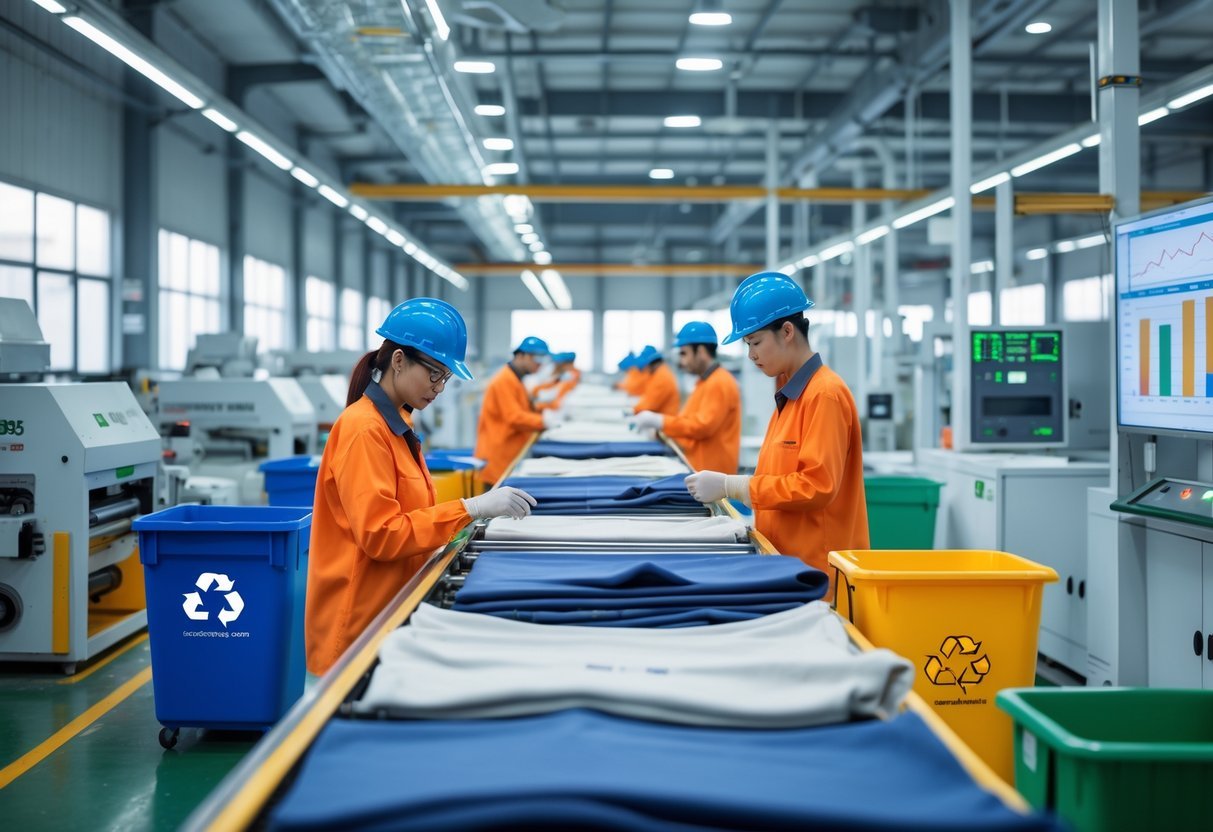
Manufacturers must manage various operational factors that affect costs and growth. These include meeting legal standards, using sustainable materials, maintaining ethical production, and planning for business expansion. Each element impacts the overall expenses and long-term success of a clothing manufacturing business.
Licensing, Regulatory, and Environmental Compliance
Licensing and regulatory compliance are costly but necessary parts of clothing production. Apparel businesses must obtain appropriate permits and meet labor laws, safety standards, and environmental regulations. This includes certifications like organic or Fair Trade that verify ethical practices.
Failure to comply can lead to fines, production delays, and damage to brand reputation. Costs for compliance vary but can range from $5,000 to $25,000 annually depending on certification needs and geographic location.
Environmental rules also require waste management systems, chemical usage monitoring, and energy efficiency measures. These increase production expenses but are critical for avoiding penalties and supporting sustainable growth.
Sustainable Materials and Ethical Production
Using sustainable materials raises sourcing costs significantly. Organic and recycled fabrics cost between $10,000 and $50,000 on average. These materials reduce environmental impact but require careful supplier vetting to ensure genuine sustainability.
Ethical production involves fair wages and safe working conditions. Labor costs typically range from $20,000 to $80,000 annually, reflecting the investment in workforce wellbeing. This commitment aligns with growing customer demand for responsible brands.
Sustainability also extends to eco-friendly dyeing processes, green packaging, and energy-efficient production methods. Companies often spend tens of thousands yearly on these initiatives to lower their carbon footprint and meet market expectations.
Scaling Up and Long-Term Business Strategy
Scaling a clothing manufacturing business requires careful cost management and forward planning. Product development expenses, such as research into innovative fabrics or embroidery techniques, can reach $25,000 to $100,000.
Marketing and advertising play major roles in sustainable growth. Appropriating budgets for campaigns that educate customers on eco-values supports brand loyalty and higher sales. Typical marketing costs range from $30,000 to $120,000.
Investments in renewable energy and waste reduction systems support long-term cost savings and compliance. Strategic alliances with ethical suppliers also improve efficiency. Overall, balancing immediate production costs with strategic expansions ensures sustainable business growth.
Frequently Asked Questions
What Impacts the Cost Of Manufacturing Clothing? It varies by factors such as startup expenses, calculation methods, location, and product type. Understanding these helps in planning budgets and pricing strategies.
What are the average start-up costs for a clothing manufacturing company?
Start-up costs generally range from $15,000 to $50,000. This range covers equipment, raw materials, labor, factory overhead, and initial production runs.
Higher costs often occur with more product types, customizations, and larger inventories. Small brands may start on the lower end using print-on-demand or limited samples.
How is the cost of manufacturing clothing calculated?
It combines raw material costs, labor, machinery use, factory overhead, quality control, packaging, and shipping.
Manufacturers add these costs and then apply a percentage markup to cover profit. The total cost sheet includes all these elements to price the garment accurately.
What factors influence the cost of manufacturing a garment in the USA?
Labor wages, quality of materials, equipment expenses, and strict compliance with regulations all impact costs.
Domestic manufacturing may cost more due to higher wages and overhead but offers benefits like shorter delivery times and quality control.
What are typical profit margins for clothing manufacturers?
Manufacturers often add a fixed percentage above their total production cost.
Margins vary but usually range from 10% to 40%, depending on the brand, product type, and market demand.
What expenses are involved in producing a batch of 300 shirts?
Expenses include fabric and material costs, labor for cutting and sewing, machinery use, quality checks, packaging, and shipping.
Bulk orders like 300 shirts benefit from lower cost per unit due to economies of scale but require more upfront capital.
How do material and labor costs affect the overall cost of manufacturing a jacket?
Materials like wool or leather can cost significantly more than cotton or polyester. Labor intensity, including sewing and finishing, also raises costs.
High-quality materials and skilled labor push the jacket’s price higher, while cheaper fabrics and automated labor may reduce costs.
